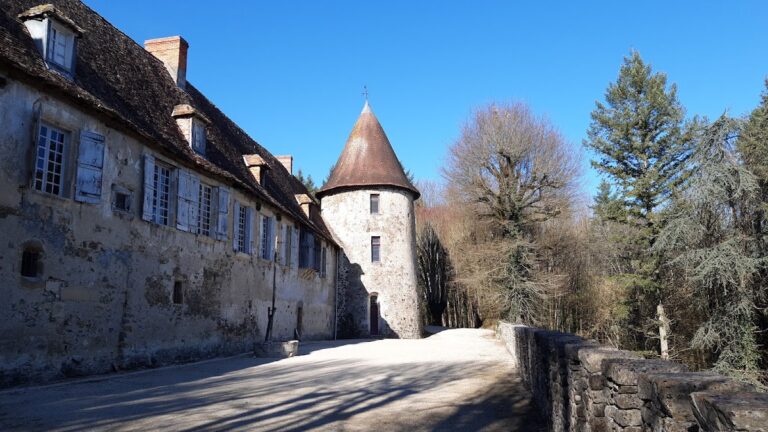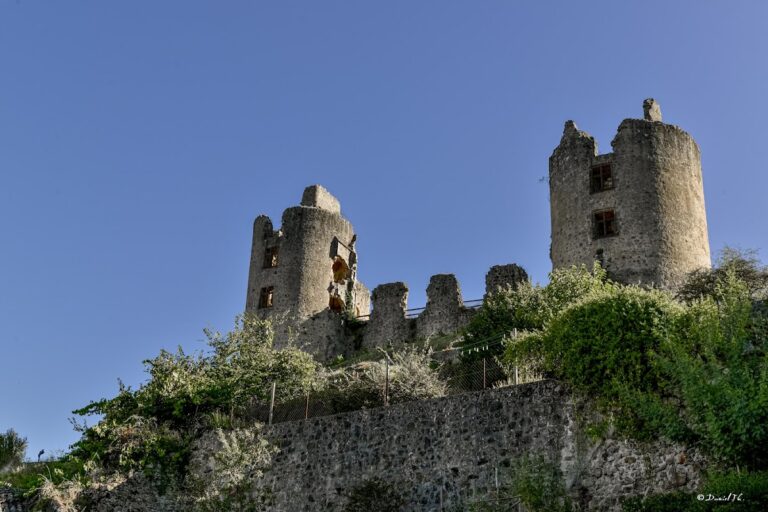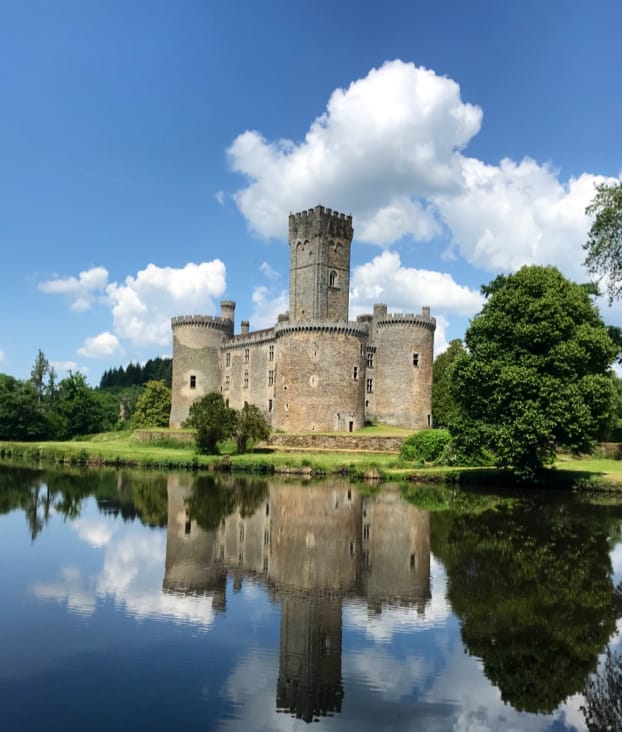Château de Rochebrune: A Medieval Fortress in Étagnac, France
Visitor Information
Google Rating: 4.4
Popularity: Low
Google Maps: View on Google Maps
Official Website: www.tourisme-charentelimousine.fr
Country: France
Civilization: Unclassified
Remains: Military
History
The Château de Rochebrune is located in the municipality of Étagnac in modern-day France. This fortress was built by medieval French nobility, with construction beginning in the 11th century as part of the region’s defensive network.
The first phase of the castle’s development began with Jourdain I, who established the initial tower before embarking on the First Crusade to Jerusalem, where he died in 1099. Over the following century, his descendants expanded the fortress by adding three round towers at the corners, gradually forming the footprint that defines the castle today. Its strategic position at the crossroads connecting Limoges, Angoulême, and Niort underscored its military importance, particularly during the time of the crusades and later conflicts.
In the 16th century, amid the turmoil of the French Wars of Religion, Rochebrune played a significant role. By 1561, it came under the control of Blaise de Monluc, a Catholic marshal known for his opposition to Protestant forces. Alongside nearby strongholds at Chabanais and Confolens, Rochebrune helped form a line of defense to stall Protestant advances from the south. However, in 1569 the castle suffered damage when Protestant troops set it on fire.
Following this destruction, Blaise de Monluc’s daughter-in-law undertook modifications to improve the castle’s livability. This involved transforming some of its defensive features into more comfortable living spaces by replacing the original walkway linking the towers with large window openings that let in natural light. Over time, the castle’s ownership shifted through marriage alliances, passing to the Escoubleau de Sourdis family and later to the Colbert family, as Angélique Charlotte d’Escoubleau de Sourdis married François Gilbert Colbert, Marquis de Saint-Pouange. In recognition of this noble lineage, Louis XIV elevated the surrounding lands to the rank of marquisate in 1702.
During the 18th century, the Colbert-Chabanais family further adapted the castle. Windows were enlarged to enhance interior illumination and the original drawbridge was replaced with a broader bridge to improve access to the estate. At the beginning of the 19th century, in 1805, the castle changed hands when Count Pierre Dupont de l’Étang, a general of the Napoleonic era, acquired the property. Later, his grandson bequeathed the estate to his cousin, Count de Richemont, an ancestor of the current owner, Henri de Richemont. Around the same period, a landscaped park was established surrounding the castle during the First French Empire. The castle retains official recognition as a protected historic monument, a status granted in 1959 for the building’s architectural and historical significance.
Remains
The Château de Rochebrune occupies a modest plateau approximately 261 meters above sea level, situated roughly 500 meters east of the village center of Étagnac. Its layout consists of three wings arranged in a rectangular form, measuring about 43 meters by 36 meters and oriented toward the north-northeast. Each corner of this rectangle is fortified with a round tower roughly nine meters in diameter, featuring pointed conical roofs often referred to as “poivrières,” or pepperpot roofs, recognizable by their distinctive shape.
Surrounding the castle is a water-filled moat ranging from five to ten meters wide, a defensive feature that historically limited direct access and enhanced protection against attackers. The main structure’s thick walls, approximately two meters wide, contain narrow vertical openings called arrow slits. These are designed with careful positioning so defenders could cover overlapping fields of fire, eliminating blind spots and creating a strong defensive perimeter.
Originally, the four towers were connected by a walkway along the walls, allowing guards to move swiftly between bastions; however, this feature was removed during later transformations. Notably, one side of the courtyard was enclosed by a fourth wing, which was demolished in 1808. At that time, large windows were inserted in the still-standing wings, a significant change that shifted the castle’s character from a purely defensive fortress to a more comfortable residence.
Inside, visitors can observe a painted ceiling dated to 1581, which displays the coats of arms of the Montluc and Rochechouart noble families, linking the interior decoration to the castle’s historical proprietors. The roofs of these buildings are now covered with slate tiles, replacing earlier flat tiles as part of ongoing maintenance and preservation efforts. Together with the facades, moat, and adjacent outbuildings on the eastern side of the estate, the castle has been designated a protected historic monument, reflecting its importance and the care taken to preserve its medieval and post-medieval fabric.










